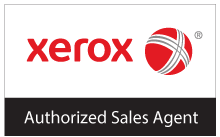There’s no doubt that the Accounts Payable (AP) and Accounts Receivable (AR) departments are the lifeblood of a company’s financial health. However, these departments often struggle with a relentless strain of repetitive tasks, manual data entry, and error-prone processes. This isn’t just a drain on resources; it’s a constraint on your company’s growth that demands a smarter solution. Enter AP and AR automation.
In this blog post, we’re going to take a closer look at the challenges Accounts Payable and Accounts Receivable departments face, how automation works, and explore the many ways in which automating your AP and AR processes can save your business a substantial amount of money. Read on to learn more.
Manual Processes in AP/AR: The Challenges
When the Accounts Payable and Accounts Receivable departments rely on manual processes, they often run into challenges that lead to lost productivity and unnecessary errors. One significant issue is the high likelihood of human error, where manual entry of data can lead to mistakes in recording invoices, payments, or receipts. This not only consumes time in rectifying errors but also increases the risk of inaccurate financial reporting.
Additionally, manual processes tend to be labour-intensive and time-consuming, slowing down the entire payment and collection cycle. Tracking and managing outstanding invoices or payments can become cumbersome without automation, leading to delays in cash flow management and potentially affecting relationships with vendors and clients.
Moreover, manual processes lack the transparency and audit trail provided by automated systems, making it difficult to trace the status of transactions or identify bottlenecks in the workflow. Overall, these challenges underscore the importance of transitioning towards automated solutions in AP/AR departments to streamline operations, improve accuracy, and enhance overall financial management practices.
How Does Automation in AP/AR Work?
Accounts Receivable (AR) and Accounts Payable (AP) automation revolutionizes financial processes by leveraging technology to streamline and optimize payment and collection workflows.
In AR automation, invoices are electronically generated and sent to customers, who can easily make payments online through integrated payment portals. Automation software tracks the status of invoices, sends reminders for overdue payments, and reconciles payments received with outstanding accounts. This process significantly reduces manual data entry, minimizes errors, and accelerates cash inflows.
On the other hand, AP automation manages vendor invoices by capturing and digitizing paper invoices, routing them for approval through predefined workflows, and facilitating electronic payments. By integrating with accounting systems, AP automation enhances visibility into financial obligations, ensures compliance with payment terms, and enables better cash flow management.
Not only does AP/AR automation replace manual tasks with intelligent software solutions that streamline operations, improve accuracy, and enhance efficiency, it can also save your business a significant amount of money. Here’s how:
1. Faster Processing Times
The most obvious and immediate benefit of AP and AR automation is the drastic reduction in processing times for invoices, payments, and receivables. Manual processes are not only labour-intensive but also time-consuming. Human errors, on top of that, can lead to further delays.
- Accelerated Invoicing and Payment Processing – A manual invoice processing system might take days, if not weeks, to go from receiving an invoice to reconciling it and making payment. With AP automation, that timeline is significantly reduced, to hours or even minutes, depending on the system’s sophistication. The same goes for AR processes, turning waiting for payments into more immediate cash injection opportunities.
- Streamlined Approval Workflows – With traditional systems, obtaining the necessary approvals for payments can involve a convoluted back-and-forth through various departments. Automation standardizes and accelerates approval workflows. Electronic approval management ensures that invoices move through the process swiftly, reducing bottlenecks and allowing for a more predictable payment cycle.
The time saved in these two areas directly translates into real cost savings. For example, reducing the time to pay can often allow a business to capture early payment discounts that would have otherwise been missed.
2. Reduced Errors
Manual data entry carries with it a significant risk of error, and each mistake needs to be corrected, often through more manual-labor-intensive processes.
- Minimizing Data Entry Mistakes – AP and AR automation systems use OCR (optical character recognition) technology to read and input data from invoices and payments. This reduces the potential for human error and ensures that the most accurate data is used for all financial transactions.
- Preventing Invoice Duplication – Automation systems can flag and prevent the same invoice from being processed multiple times, leading to a significant reduction in the occurrence of duplicate payments. The time and cost associated with rectifying these mistakes are avoided altogether.
The less time your team spends rectifying and chasing down errors, the more they can focus on strategic financial initiatives that move your business forward.
3. Optimized Cash Flow Management
The ability to manage cash flow more effectively is a critical advantage in a volatile business environment. AP and AR automation tools give you a leg up in this crucial area.
- Leveraging Dynamic Discounting – With AP automation, businesses can take advantage of dynamic discounting, which allows you to capture early payment discounts on a sliding scale based on when you decide to pay. This can lead to substantial savings over time, particularly in industries where this practice is common.
- Reducing Late Payment Penalties – Automated reminders and notifications for payment deadlines reduce the likelihood of missing deadlines and incurring costly late payment penalties. On the AR side, systems ensure that invoices are sent out promptly, reducing the payment lag between services and money in the bank.
By optimizing your cash flow, you can ensure that your money is working for you, rather than being tied up in late payments or unnecessary expenses.

4. Payment Optimization
Efficient payment processing isn’t just about speed but also about being in control of the types of payments you make and the timing of these payments.
- Enhanced Strategic Payment Planning – AP automation provides detailed insights into outgoing payments, allowing businesses to strategically plan and optimize the timing of high-value or strategic payments. For instance, tools can forecast cash needs and align payments accordingly.
- Centralized Payment Platforms – Many AP automation solutions offer a centralized platform for making payments, often with the flexibility to choose between ACH, wire, and check payments, enabling businesses to make payments in the most cost-effective way.
This level of control over your payment process ensures that you’re not just saving time, but also making the most financially sound decisions for your business’s payment strategy.
5. Optimize Working Capital
Optimizing working capital is about balancing short-term assets and liabilities efficiently. AP and AR automation directly contribute to this balance.
- Reducing Administrative Overhead – By automating routine and time-consuming tasks, your finance team can spend less time on manual processes and more time on strategic analyses that foster efficient working capital management.
- Real-Time Reporting for Improved Liquidity Assessment – Many AP and AR automation tools offer real-time reporting that allows businesses to assess their liquidity accurately, making it easier to adjust strategies in response to market shifts or unexpected expenses.
Effective working capital management improves the availability and use of cash and allows businesses to operate more efficiently and with less reliance on external financing.
6. Enhanced Supplier and Customer Relationships
Strong relationships with suppliers and customers can lead to negotiated cost savings and terms that are more favourable for your business.
- Providing Visibility and Transparency – AP and AR automation tools provide suppliers with visibility into the status of their invoices and payments, which in turn enhances trust and fosters stronger relationships.
- Improving Communication – By automating communication about payments, such as the status or expected payment dates, businesses can establish more transparent and reliable lines of communication with their suppliers and customers.
Stronger relationships can lead to discounts on future purchases or early access to sales or promotions, directly impacting your bottom line.
The Future of AP / AR Automation and Your Bottom Line
The advancements in Accounts Payable and Accounts Receivable automation are a testament to how technology and innovation can redefine the core financial processes of businesses. By using these tools, businesses of all sizes can realize significant cost savings through increased operational efficiency, reduced error rates, and improved cash flow management.
Is it time for your business to make the transition to AP / AR automation? If this information has given you pause for thought, it’s a move that could pay dividends faster than you might think.
About hubTGI
hubTGI is a Canadian-owned Managed Services provider that offers Print Services, Workflow Solutions, Managed IT, Cybersecurity Solutions, Cloud Services and VoIP to help their customers control costs, secure their data and make their people more productive.
For the latest industry trends and technology insights visit hubTGI’s Resources page.






